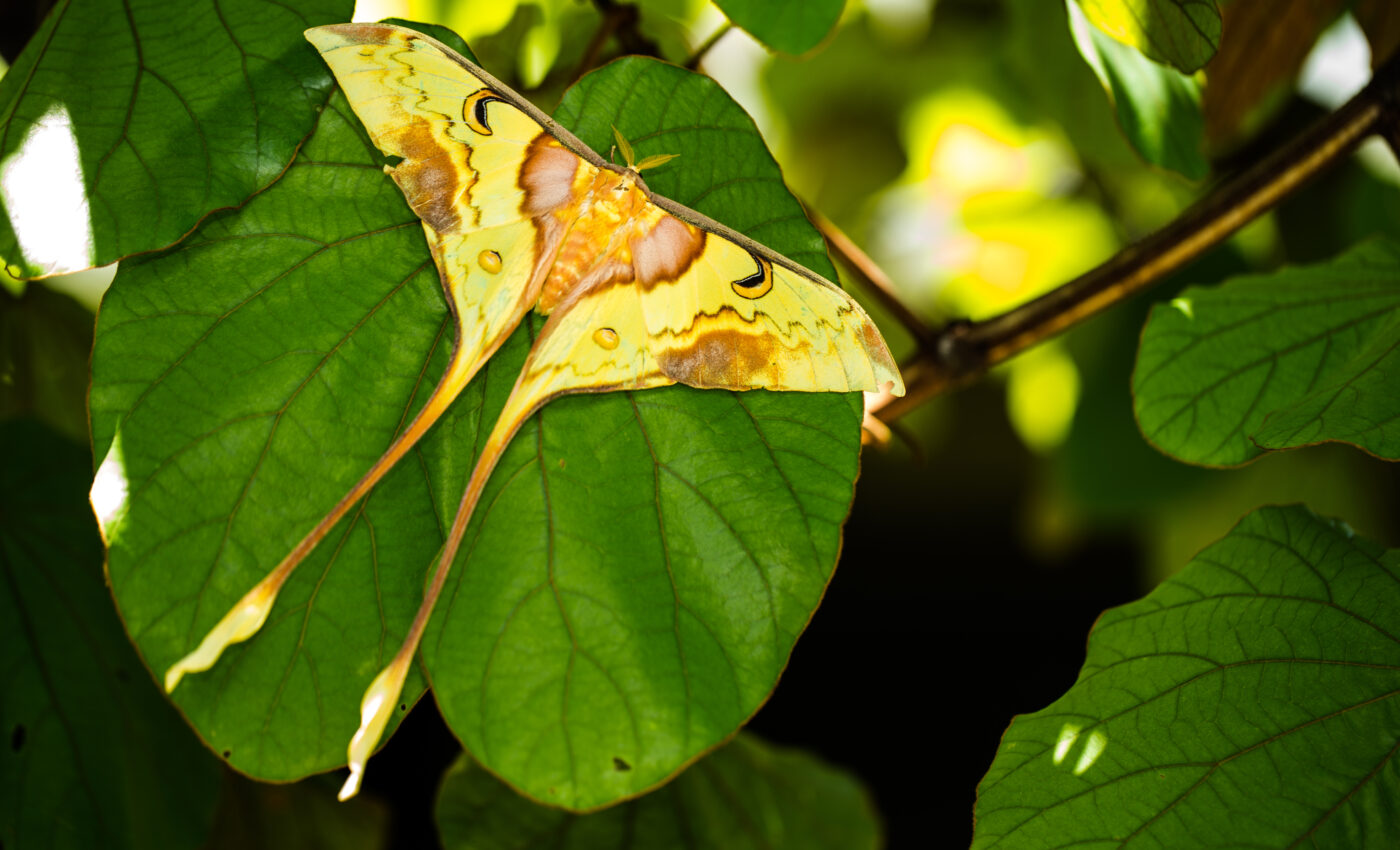
Moths have evolved wingtips that serve as acoustic decoys
The tips of the wings of some saturniid moth species are rippled and folded to reflect sound, according to a new study from the University of Bristol. The researchers found that these unique folds on the forewing tips of moths have evolved to throw off predators. For example, a bat using echolocation is more likely to attack the wingtip region (where the sound is reflected) than the body, allowing the moth to potentially survive the attack.
The experts discovered that the ripples and folds of the forewing tips have evolved to act as hemispheric and corner retroreflectors respectively. This means that they reflect sound strongly back to its point of origin, explained the study authors.
“We have demonstrated that the folded and rippled wingtips on the forewings of some silkmoths act as acoustic decoys,” said Professor Marc Holderied.
“Structurally, the wingtips act as acoustic retroreflectors, reflecting sound back to its source from numerous angles, meaning a bat would be more likely to strike the wingtip over the more vulnerable body of the moth.”
This is just the latest example of a defense strategy that has evolved among moths to increase their chances of survival. Some species of moths have evolved elongated hindwings which terminate in a coiled and twisted end. These hindwings generate very strong echoes which can divert a bat’s acoustic gaze toward them, and away from the exposed body of the moth.
“There are many silkmoths that do not have these elongated hindwings, and we were interested in how they might protect themselves from bats,” explained study lead author Dr. Thomas Neil.
“Through our research we discovered that there are many silkmoths that have rippled and folded structures not on the tips of their elongated hindwings but on the tips of their forewings. These resembled the twisted hindwing structures seen in other moths and so we wanted to know if they might also serve as an acoustic decoy to thwart a bat’s attack.”
“To test this theory, we used innovative acoustic tomography analysis. We recorded echoes from moths from over 10,000 angles, to compare whether the echoes coming from the wingtips of these moths were stronger than the echoes from the body. If the echoes coming from the rippled and folded wingtips were stronger than that of the body, this would indicate that they were indeed acoustic decoys.”
“Conclusive support for the idea that the forewing reflector is an acoustic decoy comes from our finding that acoustic forewing decoys always evolved as an alternative to acoustic hindwing decoys, with there being no species known to possess both.”
Going forward, the researchers will collect behavioral data to confirm the results in the lab. According to the experts, they plan to monitor bats and moths with varying levels of folded wing morphologies to see how much of a survival advantage it actually gives them.
“The results of this study introduce another exciting aspect to the story of the bat-moths acoustic arms race,” said Professor Holderied.
“We have identified a novel form of acoustic defense amongst silkmoths which may give them an advantage over hunting bats. Wider implications might include improved man-made anti radar and sonar decoy architectures.”
The study is published in the journal Current Biology.
–—
By Chrissy Sexton, Earth.com Staff Writer













